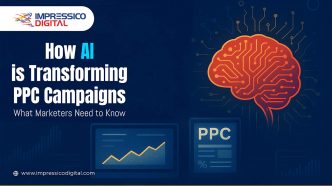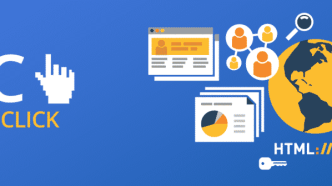In the rapidly evolving realm of online shopping, there is no shortage of competition, clicks, conversions, or customers. If you’re a brand in e-commerce, and you’re ready to break out of stagnant, flat growth, you know the motions: you built a solid product, you’re getting traffic, but your return on ad spend (ROAS) is stagnant or worse, decreasing. That’s when PPC for e-commerce can be your growth engine. When done right, PPC marketing does more than increase visits; it scales your sales. Let’s see how.
Why PPC for e-commerce is important today
Paid search, shopping ads, display, remarketing, demand Gen—these are all part of the PPC toolbox. At its core: each time a person clicks your advertisement, you pay—so you’ll want that click to be followed by action. As a certain guide states: “Pay-Per-Click marketing is an online advertising model where advertisers pay publishers when users click their ads.”
The good news? When your ad, keyword, and offer match true intent, you cut a great deal of wasted noise and immediately enter the buyer zone. For e-commerce brands with high competition, targeting accuracy is pure gold.
The current landscape
Numerous of our brand partners come in with the same pain points:
- Ad spend is increasing, but ROAS is declining.
- Click-throughs are occurring, but sales are lagging behind.
- Challenge in attributing which campaigns actually move the needle.
The shift in ad platform: “zero-click” searches, AI-refining campaigns, and less insight into what’s causing results. For instance, “Fewer clicks mean higher stakes… Click-through rates are declining, costs are up, and once-steady campaigns are harder to keep profitable.”
These are not minor problems—they imperil growth and budget credibility.
How PPC marketing unlocks scale: beyond the surface level
If you believe bidding on a keyword is sufficient, you are mistaken. To really scale sales, we implement five-layered approaches:
Smart targeting + audience layering
Rather than simply bidding on “red running shoes,” we construct audience segments: previous buyers, cart abandoners, high-spending purchasers, and lookalikes. We layer demographics, behaviors, value bands, and then deploy bid strategies in turn—spending more where profit margin resides, and less where it does not.
Intent-driven ad strategy
Most brands get this wrong: keywords indicate intent. A person browsing “buy red running shoes size 10” is much deeper down the funnel than “best running shoes 2025.” We organize campaigns with that in mind: top-of-funnel brand building, mid-funnel comparison, and bottom-funnel transactional. Even Google Shopping campaigns are improved by segmentation: “keyword segmentation” in the shopping environment provides greater control by purchase intent. (Search Engine Journal)
That means fewer wasted clicks and more focused spend.
Measurement & attribution that really works
Clicks alone aren’t enough to track. You need to monitor conversions—actual sales—and value them. As per industry publications, “Conversion tracking helps you analyze how users interact with your ads, from clicks to conversions.”
We link your PPC campaigns to backend sales data, connecting cost to revenue, not traffic alone. And that visibility allows you to scale with confidence.
Creative & funnel alignment
Scaling isn’t about budget; it’s message-match. Your ad copy, landing page, and offer need to match where the user is in the journey. If a person clicked through “discount code running shoes size 10,” your ad needs to have a discount and that size. A mismatch kills scale. At Impressico Digital, we make sure creative is test-driven, aligned, and optimized.
Typical pitfalls e-commerce brands encounter in PPC campaigns
- Over-focusing on high CTR. A shiny click-through rate (CTR) doesn’t guarantee conversions. In fact, low-CTR ads sometimes outperform high-CTR ones because they attract better traffic.
- Ignoring funnel stages. Treating bottom-funnel often leads to a higher cost per acquisition (CPA).
- Lack of proper segmentation. Bidding broadly on “shoes” bleeds budget.
- Poor attribution & reporting. Without accurate tracking, you’ll scale your budget blindly.
- Excessive dependence on traditional formats. As platforms change (e.g., increased focus on shopping ads over search ads), dated constructs pull results down.
Why working with us is a game-changer
Here’s where we are: your strategic partner, not merely a service provider. With us, you receive:
- A focused PPC for e-commerce strategy: we don’t simply launch ads; we establish scalable structures.
- Clear reporting: cost → click → conversion → revenue, so you always know what you’re getting.
- Technology-led optimization: we employ the most advanced tools, automation, and strategic guidance to remain at the forefront in this dynamic PPC environment.
- Deep funnel thinking: we don’t just stop at clicks. We optimize the entire journey—from ad to basket to repeat customer.
- Ongoing enhancement: campaigns live, dynamic, and tested frequently. We don’t “set and forget.”
You’re already dealing with enough noise. Let us sort it out. We’ve grown brands from stagnant sales to sustained double-digit growth through PPC. When you work with us, you’re selecting an agency that handles your ad spend the way we’d treat our own.
Roadmap to real-world success: from first click to scale
This is the path we walk you through:
- Audit: We begin by auditing your existing PPC configuration—campaign structure, targeting, and tracking.
- Setup: Establish audience segments, value tiers, and bid strategies. Construct funnel-optimized campaign architecture.
- Launch & test: First runway with explicit tests—creative messages, landing pages, audience segments.
- Track & optimize: Daily monitoring of key metrics—CPA, ROAS, average order value (AOV). We eliminate waste.
- Scale: Once profitable segments are found, we scale budgets proportionately, reinvesting in what works.
- Expansion: We expand channels—shopping ads, remarketing, display, even retargeting across platforms—to leverage full PPC marketing power.
- Repeat & refine: Sales scale is never static; we continue to optimize, refresh creative, and build profitable segments.
Statistics that demonstrate PPC still performs
- PPC returns an average 200 % ROI (i.e., on every $1 spent, about $2 in revenue).
- Tracking matters: you need to track from clicks to conversions in order to accurately measure success.
These figures reveal: if handled intelligently, PPC for e-commerce is not merely a cost—it is a growth driver.
➡️ **Ready to turn your PPC spend into revenue? Get your FREE PPC Strategy Session with Impressico Digital today.
Conclusion
If you’re an e-commerce brand stuck in the “traffic trap” (lots of visits, little scale) or facing stagnant ad performance, this is your moment. PPC marketing offers the ability to not only drive traffic but also scale sales smartly. With the right partner—someone who understands your brand, your audience, and the full path from click to customer—you can turn ad spend into sustainable growth.
At Impressico Digital, we’re ready to be that partner.
Ready to grow your sales with effective PPC campaigns? Contact us now and let’s get started.
FAQ:
1. What is PPC for e-commerce and why should I invest in it?
PPC for e-commerce is the use of paid-ad campaigns (search, shopping, display, remarketing) customized specifically for online shops. You pay for clicks on your ads and only when someone actually clicks. Since the intent of the user frequently is immediate (particularly bottom-funnel), PPC provides a quicker route to sales than organic alone.
2. How much budget do I dedicate to a PPC campaign?
There’s no single answer— but you should allocate enough budget to test key segments and learn quickly. At that point, you’re measuring CPA and ROAS. Then, after you know the cost-effective segments, you scale up. It’s not budget size, it’s spending smart rather than wide.
3. How do we gauge the performance of a PPC campaign for our e-commerce website?
Success is quantified by actual business results: revenue, ROAS (return on ad spend), AOV (average order value), lifetime value of customers acquired, as well as CPA (cost per acquisition). Analytics and conversion tracking need to be precise. Without it, you’re flying blind.
4. Common pitfalls that e-commerce brands fall into when they do PPC marketing.
Common pitfalls are: pursuing high CTRs without conversion consideration; failing to segment by intent; inadequate tracking and attribution; simply depending on historical search campaigns when shopping ads can do better; and misaligned creative and funnel stage.
5. Why should we pick you to manage our PPC campaigns?
Because we’re not just a vendor—we’re a strategic partner. We specialize in PPC for e-commerce only, not general campaigns. We provide transparent tracking, funnel-aligned strategy, test-driven creative, and a scale mindset. We’ve done it before and know how to turn ad spend into sales growth that matters for online brands like yours.
If you want to discuss strategy, we’re ready. Let’s turn your paid-search investment into predictable, scalable e-commerce sales.



